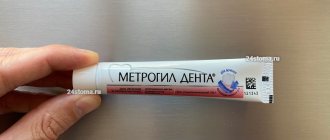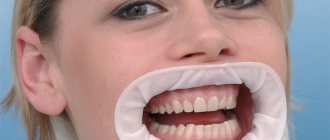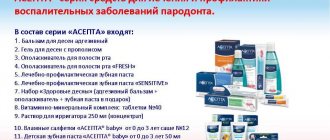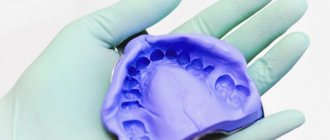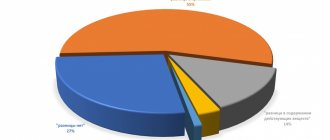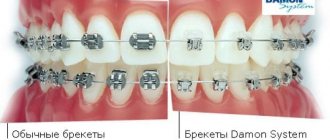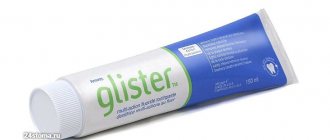With a sore throat, a person complains of soreness, scratching, irritation, discomfort, and a burning sensation in the throat. The throat is sore, it is difficult to swallow food, drink, these sensations intensify when swallowing or talking.
Sore throat may be accompanied by swelling of the throat mucosa, difficulty swallowing, soreness and enlargement of the cervical lymph nodes, the appearance of white or yellowish spots on the tonsils, coughing, sneezing, nasal congestion, runny nose, fever, chills, excessive salivation, muscle and joint pain, headache, nausea and vomiting, skin rash, loss of appetite, feeling of a lump in the throat, heartburn, hoarseness.
Causes of sore throat
Most often, a sore throat is associated with a viral infection (ARVI, influenza, Coxsackie virus, new coronavirus infection, chickenpox, measles). A sore throat caused by a bacterial infection (such as streptococcal infection) is less common. Other causes of sore throat include:
- tonsillitis (tonsillitis);
- epiglottitis;
- mononucleosis;
- paratonsillar, parapharyngeal, retropharyngeal abscesses;
- allergies (to pollen, mold, dust, animal hair and epidermis);
- dry air, air pollution (tobacco smoke, chemicals);
- breathing through the mouth with nasal congestion;
- spicy food, alcohol;
- overstrain of the muscles of the larynx and pharynx (during shouting, the habit of speaking loudly, lecturing);
- gastroesophageal reflux disease (GERD);
- malignant tumors of the tongue, throat, larynx;
- HIV infection.
Risk factors for a sore throat include: childhood and adolescence (usually bacterial infections), smoking (including second-hand smoke), frequent or chronic sinus infections (sinusitis), seasonal allergies or prolonged exposure to allergens such as mold, dust, pet hair, exposure to chemicals, weakened immunity (due to illness or treatment, for example, chemotherapy drugs).
Contraindications to the use of sprays
In some cases, throat sprays for children have contraindications.
Obstructive processes in the bronchi. These conditions are characterized by bronchospasms (strong and sharp narrowing of the lumen of the bronchi) and respiratory dysfunction. Any irritation of the mucous membrane of the throat, including contact with medicinal substances, can provoke bronchospasm.
Allergy to at least one component of the drug. Medicines include one or more active ingredients and auxiliary components. Before using any throat spray for children, you should carefully study the instructions and composition. If the list of substances contains even one component to which the child’s immune system is hypersensitive, then the spray should not be used.
Atrophic pharyngitis. With this disease, the mucous membrane of the pharynx becomes thinner and loses its ability to perform its functions. Accordingly, the mechanisms of action of sprays for children against sore throat are disrupted when they come into contact with atrophied mucous membranes, as a result they can cause undesirable changes in it.
When should you see a doctor if you have a sore throat?
You should consult a doctor if the sore throat is severe and lasts more than 4-5 days, there is difficulty swallowing (breathing), difficulty opening your mouth, a rash on the skin, blood in saliva or sputum, temperature exceeds 38.3˚C, swelling is observed tongue or neck, pain in muscles and joints. A child needs to consult a pediatrician if his sore throat is accompanied by difficulty breathing or swallowing, stridor (noisy wheezing), or excessive salivation.
Diagnosis of a sore throat includes anamnesis, physical examination, if necessary, the doctor takes a culture from the throat (bacteriological examination), and conducts a universal rapid test for the presence of group A beta-hemolytic streptococcus in the throat.
A viral sore throat does not require treatment. To relieve associated symptoms, you can take ibuprofen or paracetamol (caution, do not give aspirin to children!), use anesthetic sprays or lozenges, gargle with warm salt water, drink plenty of fluids, and get plenty of rest. If a sore throat is caused by a bacterial infection, antibacterial drugs are prescribed, it is important to follow the doctor's recommendations regarding the duration of their use and dosage. For sore throat associated with allergies, GERD and other diseases, appropriate drug therapy is prescribed (antihistamines, antacids, proton pump inhibitors).
When to use children's throat spray
Like any other medicine, a spray for sore throat in children can only be used for certain indications:
- Inflammatory diseases of the ENT organs
- Inflammatory diseases of the oral cavity
- Surgical interventions and injuries
- Dental procedures.
Inflammatory diseases of the ENT organs
This is a large group of diseases that develop under the influence of pathogens and cause unpleasant symptoms.
The most common diagnoses in childhood are:
- pharyngitis - inflammation of the mucous membrane of the pharynx;
- laryngitis – inflammation of the mucous membrane of the larynx;
- Tonsillitis (tonsillitis) – inflammation of the tonsils.
Inflammatory diseases of the oral cavity
These are one of the most insidious diseases.
A child’s tendency to frequent ARVI may be associated with chronic inflammatory and infectious processes in the oral cavity, because the oral cavity is anatomically and functionally connected to the upper respiratory tract, paranasal sinuses and even the middle ear, which makes the treatment of diseases in this area very important. The most common diseases in children are:
- gingivitis – inflammation of the mucous membrane of the gums;
- glossitis - inflammation of the tissues of the tongue;
- stomatitis – inflammation of the oral mucosa;
- candidiasis – fungal infection of the oral mucosa;
- periodontal disease is a large group of gum diseases in which there is severe damage to the tissues of the supporting apparatus of the teeth;
- calculous sialadenitis - inflammation of the salivary glands with the formation of stones in them.
Surgical interventions and injuries
Violation of the integrity of the tissues of the mucous membrane, regardless of whether it occurred during surgery or during injury, is always a high risk of infection and a set of unpleasant symptoms. Pain, burning, itching and other manifestations immediately after an injury or at the stage of wound healing cause severe discomfort to the child, and if an infection occurs, severe complications can develop.
Dental procedures
Removal of soft or hard plaque on teeth, tooth extraction, period of adaptation to braces and other dental procedures may require antiseptic treatment of the oral cavity to prevent (or treat) possible infectious processes, as well as pain relief.
Children's spray for the throat and mouth is the best option for symptomatic and antimicrobial treatment in the above cases. This is due to the fact that when spraying the product, there is no direct contact of the inflamed tissue with cotton swabs, tampons and other auxiliary means, which relieves the child of unpleasant sensations and at the same time ensures uniform coverage of the mucous membrane with the drug.
Symptoms of ARVI in children
The child or the child’s parents may notice signs such as:
- Acute onset of the disease, accompanied by a rise in body temperature. Typically, body temperature fluctuates between 37.5-38.0 degrees. Usually the temperature reaction disappears after 2-3 days. A prolonged increase in temperature may indicate influenza or an adenovirus infection. Parents should remember that an increase in temperature over time and increased intoxication in the baby (weakness, lethargy, malaise) may indicate the addition of a bacterial infection. A repeated increase in the baby’s temperature after it has stopped may indicate the development of acute otitis media against the background of a prolonged runny nose.
- Nasal congestion, nasal discharge.
- Burning, pain, tingling, dry throat. Often, an accumulation of mucus, flowing down the back of the throat, can lead to a cough.
- Noise and pain in the ears, hearing loss, clicking. These symptoms develop when inflammation spreads to the auditory tubes.
- Infants become restless and have difficulty feeding and falling asleep.
- Hoarseness may occur.
- Redness of the eyes.
Signs of ARVI persist for 5-7 days, in some cases reaching 10-14 days.
Mechanisms of effectiveness of first-generation antihistamines for ARVI
Despite the known effectiveness of first generation antihistamines for ARVI, the mechanisms of their action remained poorly understood.
Individual symptoms of ARVI are caused by multiple, sometimes specific to different symptoms, inflammatory mechanisms. Sneezing was usually explained by the release of histamine from nasal mast cells and basophils, which occurs when these cells are activated during acute respiratory viral infection. As evidence, they cited the fact that intranasal administration of histamine (but not other mediators) to healthy people causes sneezing. It is also known that treatment with first generation antihistamines is highly effective in reducing sneezing during acute respiratory viral infections both under normal and experimental conditions. However, unlike allergic rhinitis, in ARVI, the level of histamine in nasal secretions is not increased, although the sensitivity of the nasal mucosa to histamine in ARVI increases.
Antihistamines of both the first and second generation are competitive histamine antagonists at the level of H1 receptors. In addition, unlike second-generation drugs, first-generation antihistamines exhibit competitive antagonism towards acetylcholine at the level of neuronal and neuromuscular muscarinic receptors, and also penetrate the blood-brain barrier. Limited studies have shown that second generation antihistamines are not able to reduce sneezing in ARVI.
These data raised the question for researchers about the mechanisms through which first-generation antihistamines (Suprastin and others) are able to reduce rhinorrhea, swelling of the nasal mucosa and sneezing during ARVI, and why this effect is not characteristic of second-generation drugs. Research into ARVI in natural conditions is associated with certain technical difficulties. Thus, it is difficult to recruit patients in the early stages of the disease, when the effectiveness of treatment can be most accurately assessed. Therefore, it would be useful to confirm the results of studies of antihistamines in acute respiratory viral infections conducted in natural conditions using an experimental rhinovirus infection that allows accurate assessment of sneezing. Such a study was conducted by PS Muether and JM Gwaltney, who studied the effects of loratadine, a second generation antihistamine, in experimental rhinovirus infection.
Materials and methods
The study included 66 adult volunteers whose antibody titres to type 16 rhinovirus did not exceed 2 units and who had not suffered from acute respiratory viral infection or other illness with fever in the last week. In addition, patients with any serious concomitant diseases, bronchial asthma, allergic rhinitis were excluded; who have recently taken (according to the characteristics of their pharmacokinetics) antihistamines, cold remedies and other drugs that may affect the results of the study.
Rhinovirus infection was caused by double (with a 20-minute break) intranasal administration of a standardized culture of type 16 rhinovirus. Nasal lavages for subsequent identification of the virus were obtained 8 days and immediately before infection (to exclude accidental infection with a “wild” strain of rhinovirus), as well as every morning before taking the drug. Neutralizing type-specific antibodies were determined in blood tests 7 days before inoculation and 2–3 weeks after it.
Patients rated symptoms of the disease (sneezing, nasal discharge, nasal congestion, sore throat, cough, headache, weakness, chills) over the previous day on a 5-point scale: 0 - no symptoms, 1 - mild, 2 - moderate, 3 – pronounced, 4 – very pronounced. Overall symptom severity was calculated as the sum of all symptom scores. Assessment of disease severity also included daily measurements of nasal secretions. Each patient recorded the frequency of sneezing and coughing in a diary. The presence and severity of side effects were assessed daily.
Patients were randomized in a double-blind manner to loratadine or placebo. Loratadine or placebo was prescribed from days 1 to 13 of the study, and virus inoculation was performed on day 8.
results
Of the 66 patients included in the study, 34 received loratadine and 32 received placebo. Four people in the loratadine group and one in the placebo group were infected with a wild strain of rhinovirus at the start of the study, so their data were not assessed. One person in the placebo group stopped taking it due to the onset of migraines on day 10. Thus, data from 60 people were assessed.
After inoculation, the virus was detected in the nasal secretions of 28 (93%) people in the loratadine group and 24 (80%) in the placebo group; an increase in type-specific antibodies was noted in 40% and 37%, respectively. The overall infection rates were 97% and 80% (differences not significant).
Mean viral titers did not differ between groups. According to the Jackson criterion, the disease developed in 23 (79%) of 29 infected people in the loratadine group and in 14 (58%) of 24 infected people in the placebo group (differences not significant).
The severity of sneezing did not differ between groups in the first 3 days and was slightly less in the placebo group on day 4. The severity of nasal congestion, sore throat, cough, and overall symptom severity also did not differ between groups. Headache and malaise were reduced with loratadine in the final days of the study. Rhinorrhea was less in the placebo group on days 2–3, but more on days 4–5. When objectively measuring the volume of nasal secretion, there was a trend toward greater volume in the loratadine group (the differences were not significant).
Side effects were noted in the placebo group: 2 cases of vomiting and 1 case of migraine.
Discussion
Thus, there were no differences between the loratadine and placebo groups in the incidence of rhinovirus infection and disease development, or in the severity of symptoms.
The results also showed no therapeutic effect of loratadine on sneezing. This confirms publications that show that second generation antihistamines are not able to reduce sneezing in ARVI. Why are first generation antihistamines effective against sneezing, but second generation drugs are not?
Rice. 1. Mechanisms of the sneezing reflex. N - nicotinic synapses, M - muscarinic synapses, ? — mediators are not installed.
First generation antihistamines block not only H1 receptors, but also muscarinic receptors, and also penetrate the blood-brain barrier. The last two properties are not inherent in second generation antihistamines.
Information about the neurological mechanisms of the sneeze reflex comes mainly from animal experiments. The reflex arc includes peripheral nerves and the medulla oblongata, and involves histamine H1 receptors, muscarinic and nicotinic receptors. In acute respiratory viral infections, the reflex is triggered by infectious damage to the cells of the mucous membrane. Involvement of mast cells and basophils with a subsequent release of histamine during ARVI is not observed, but stimulation of the free nerve endings of the ethmoidal branch of the trigeminal nerve by inflammatory mediators, such as bradykinin, occurs. The nerve impulse then travels along afferent fibers to the sensory nucleus of the trigeminal nerve and the adjacent sneezing center. Through the synapse, the impulse reaches the superior salivary nucleus of the facial nerve and, having passed another synapse, enters the sphenopalatine ganglion along the preganglionic branches. The excitation is then transmitted through postganglionic fibers by muscarinic synapses to the mucous glands and blood vessels. As a result, secretion and exudation stimulate the endings of the trigeminal nerve and the impulse is again sent to the sneezing center in the medulla oblongata. With sufficient signal strength, excitation is transmitted to the respiratory neurons of the reticular formation, and from them along the fibers of the vagus, phrenic and intercostal nerves through nicotinic synapses - to the respiratory muscles involved in the act of sneezing.
Histamine may potentially be involved in the sneezing process at several sites in the reflex arc, which may therefore be sites of application for antihistamines. The first of these is the nasal mucosa, where H1 receptors are present on the free nerve endings of the trigeminal nerve. The fact that the effect of antihistamines in ARVI is realized at the level of the mucous membrane is argued against by the normal levels of histamine in nasal secretions during ARVI, as well as the lack of effect from second generation antihistamines, which reach the mucous membrane and block H1 receptors in it. But since the sensitivity of the nasal mucosa to histamine during ARVI increases, this point of application of antihistamines during ARVI cannot be completely excluded.
The next point of application for first generation antihistamines is the medulla oblongata, where a number of synaptic switches of the sneezing reflex occur. H1- and muscarinic receptors are found in these zones. These nicotinic receptors may be targets for first-generation antihistamines that cross the blood-brain barrier. It should be taken into account that the mediators of the synapses of the medulla oblongata involved in the sneeze reflex have not yet been identified. The ineffectiveness of second generation antihistamines in acute respiratory viral infections confirms the possible important role of these nerve centers.
Parasympathetic stimulation of glandular secretion and vasodilation is mediated exclusively by muscarinic receptors. At this level, the application of anticholinergic activity inherent in first generation antihistamines is quite likely. Indeed, they reduce the volume of nasal secretion during ARVI. The second afferent impulse into the medulla oblongata is also caused by stimulation of the endings of the trigeminal nerve. Exudation from blood vessels triggers the kinin system. The resulting kinins stimulate nerve endings both on their own and by leading to the release of histamine from mast cells, which represents a new target for antihistamines. When excitation reaches the medulla oblongata, it can be suppressed by first generation antihistamines (as described above). Further, impulse transmission depends on nicotinic receptors and is not sensitive to antihistamines.
It can be concluded that the therapeutic effect of first generation antihistamines on sneezing may be largely due to the blockade of H1- and muscarinic receptors in the medulla oblongata. H1 receptors are also present in large numbers in the hypothalamus, where histamine, as a neurotransmitter, is involved in maintaining wakefulness and in a number of other functions. This fact may be associated with drowsiness caused by first generation antihistamines.
First generation antihistamines, like scopolamine (an anticholinergic drug that penetrates the blood-brain barrier), can reduce nausea in motion sickness (motion sickness). This once again suggests the important role of muscarinic receptors in the central nervous system.
Conclusion
Treatment of ARVI with first generation antihistamines (Suprastin, etc.), in contrast to second generation drugs, is highly effective in reducing symptoms such as rhinorrhea, swelling of the nasal mucosa and sneezing. Although information about the subtle neurotransmitter mechanisms of this phenomenon is still insufficient, it can be assumed that this occurs due to the activity of first-generation antihistamines in relation to H1-histamine and muscarinic receptors, as well as their ability to penetrate the blood-brain barrier.
Prepared by Ph.D. A.N. Nikolaev based on materials:
P. S. Muether, J. M. Gwaltney. Variant effect of first– and second–generation antihistamines as clues to their mechanism of action on the sneeze reflex in the common cold. // Clinical Infectious Diseases, 2001; 33:1483–8.
ARVI and immunity
According to the World Health Organization, ARVI ranks first in the structure of morbidity among young children. There are a large number of viruses that cause ARVI. These include: influenza viruses, parainfluenza, respiratory syncytial viruses, adenovirus, ECHO viruses, Coxsackie viruses, rhinoviruses, reoviruses, coronaviruses. The high incidence of ARVI is associated with unstable immunity in children after previous ARVI, as well as the high prevalence of these viruses. In unfavorable environmental conditions, acute respiratory viral infections predetermine even greater changes in immunity, especially in young children. This can lead to significant changes in the formation of the baby’s immunity, as well as contribute to the development of chronic diseases of various systems of the child’s body at an older age. Considering the high prevalence of ARVI, the issue of treating children with this pathology remains relevant. We will approach the treatment of colds from the point of view of modern protocols for the treatment of ARVI in children, which were developed by the Russian Union of Pediatricians. Before moving on to considering children's medications for colds and flu, it is necessary to understand the main manifestations of ARVI in children.
It is important to monitor the child’s condition and contact a pediatrician at the first symptoms of a cold.
Aqua Maris Strong
Aqua Maris Strong throat spray is a sterile hypertonic solution of sea water. This spray is used for hygienic, therapeutic or preventive purposes. "Aqua Maris Strong" cleanses the throat mucosa, soothes irritation, and protects it from negative factors. "Aqua Maris Strong" helps to increase local immunity of the throat mucosa. The throat treatment spray is presented in 30 ml opaque glass bottles and has a special convenient swivel spout for spraying. “Aqua Maris” for the throat is a clear solution with a subtle smell of sea water. “Aqua Maris Strong throat spray is suitable for treating adults and children from one year of age. But you should be careful when using the spray in very young children, so as not to provoke laryngospasm. “Aqua Maris Strong” copes well with throat diseases in the early stages or as part of complex therapy for pathology of the ENT organs.
Aqua Maris Strong
Jadran-Galenski Laboratories, Croatia
To eliminate swelling of the nasal mucosa, especially for persons with hypersensitivity to chemical drugs, incl.
during pregnancy and lactation. Treatment of acute and chronic inflammatory diseases of the nasal cavity, paranasal sinuses and nasopharynx: - acute and chronic rhinitis; — acute and chronic sinusitis (including acute and chronic sinusitis); - nasopharyngitis from 19
5.0 1 review
506
- Like
- Write a review
